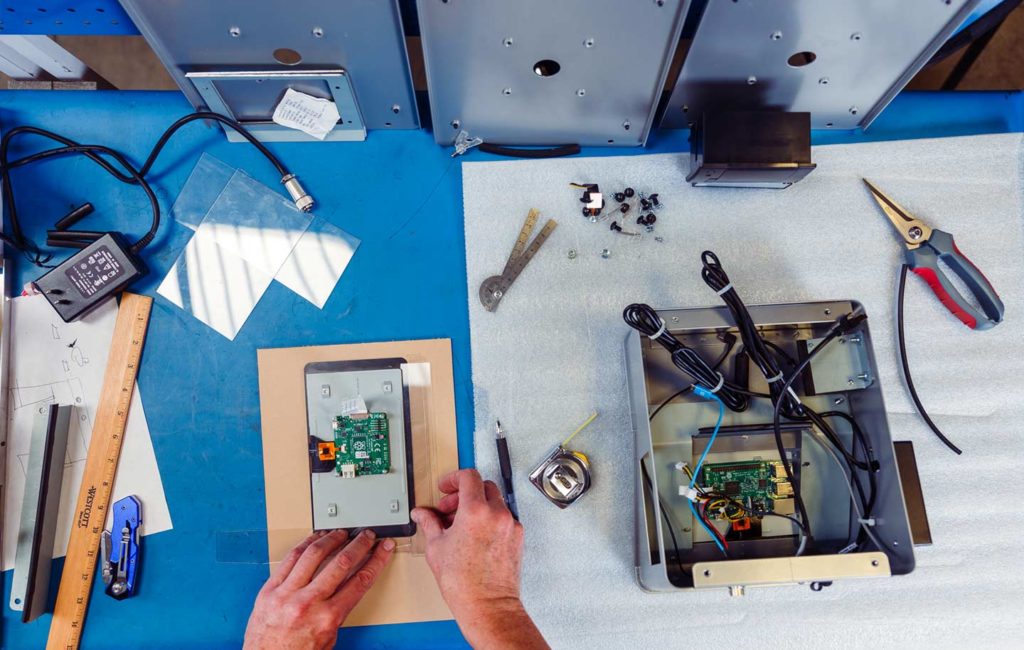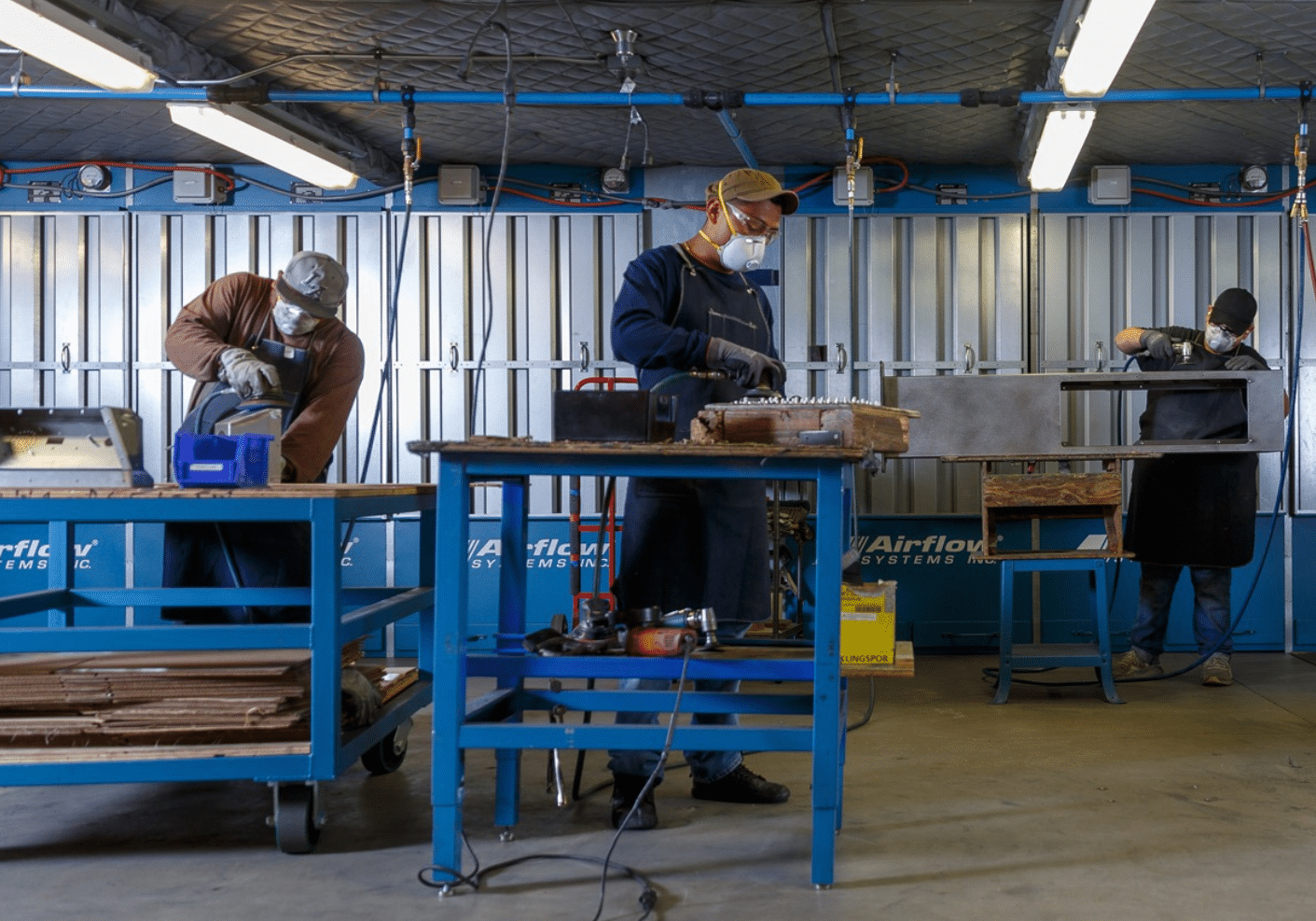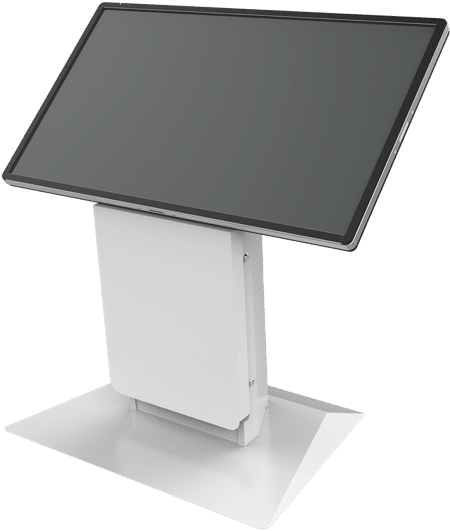As part of our 50th anniversary series, we’re reflecting on the ideas that have shaped Olea over the decades. And none has been more central than this: we view kiosks as problem solvers. They are a solution to a human problem, shaped by observation and curiosity.
Self-service is often looked at as a trend or a convenience, but Olea sees it differently. It’s a strategic tool. It’s a tool that considers environment, user behavior, accessibility, privacy, throughput, and the needs of staff behind the scenes. Whether deployed in a healthcare clinic, an airport, or at an outdoor event, a self-service kiosk must meet people where they are, anticipate how they move, and guide them intuitively to an outcome.
That’s why every engagement at Olea begins with a simple request:
“Walk me through it.”
That phrase unlocks the story behind the project—why the kiosk is needed, who’s using it, what matters most during that interaction. From there, Olea gets to work. They’re not just fabricating hardware, but architecting a complete experience and looking at the kiosks as problem solvers.
Design Thinking at the Core
At the heart of every Olea kiosk is a simple question: “What needs to happen here?” That’s why design starts not with hardware specs, but with conversation. Clients are asked to walk through the intended interaction step by step. They’re asked to start with the moment a guest approaches the screen to the final action, whether that’s scanning an ID, printing a badge, or unlocking access.
These walkthroughs are intended to identify the challenges that specs alone won’t capture:
- Will users instinctively know where to place their ID, or do we need visual cues and lighting to guide them?
- Does the kiosk need to accommodate both standing and seated users, including someone in a wheelchair?
- Will lighting impact facial recognition?
- Will the user need to align their face with a fixed camera, or should the camera adjust automatically based on their height?
- Is facial recognition the only method of authentication, or does it need to work alongside another factor like a badge or QR code?
The design team will ask you:
“Am I putting a document down on glass? Feeding it into a scanner? Holding it up to a camera?”
It’s these kinds of practical questions that shape the design of every kiosk. By focusing on how users interact with the kiosk in the real world, Olea ensures that its designs are not just functional but that they also deliver a positive user-experience.
Contextual Use Drives Component Choices
One of the most misunderstood aspects of kiosk design is how environment and use case influence component selection. For example, choosing between a $200 and a $3,000 license scanner isn’t just a budget decision. It depends on how the scanned data will be used, how fast the interaction must be, and whether security or compliance requirements apply.

A kiosk intended for a stadium on game day needs to prioritize speed, intuitive user prompts, and ruggedized components that can withstand the elements. By contrast, a healthcare check-in kiosk may need advanced liveness detection and ADA-friendly camera angles, with components that support high-accuracy biometric authentication in a quiet, climate-controlled environment.
Olea doesn’t assume the same solution works everywhere, because it doesn’t. Each design is tailored to the physical space, expected user behavior, and operational requirements of its specific deployment. That’s design thinking in action.
Real Examples of Story-Driven Design
Designing for self-service isn’t theoretical at Olea. These real-world examples show how flexibility, creativity, and empathy guide every build.
Biometrics Kiosks: Layering Complexity with Usability
As biometric authentication has evolved from fingerprint and iris scanning to facial recognition with liveness detection, Olea has evolved with it, helping clients navigate not only the technology, but how humans interact with it.
In healthcare, Olea partnered with Novant to develop kiosks that used iris scanning for secure patient identification, prioritizing hygiene, accessibility, and speed. For Wow Bao, facial recognition was integrated to create a loyalty-driven experience where users could opt in and receive personalized greetings and offers at self-service kiosks. Olea also helped support facial authentication for fast stadium entry at Major League Baseball games. In this use case, the kiosk is used to balance security with throughput during high-traffic events.
Perhaps most intricate was the kiosk designed for passport validation at Dallas/Fort Worth International Airport. It required the capture and comparison of multiple data points: passport scan, facial recognition with liveness detection, and secure transmission all while guiding unfamiliar users through a short interaction in a high-pressure setting.
In each of these cases, Olea’s role went far beyond housing components. It meant translating complex biometric specs into a kiosk that was usable, intuitive, and ADA-compliant.
ADA and Ergonomics
Accessibility isn’t a box to check and Olea embraces it early in the process. Take the example of the kiosks built for USCIS: these included fingerprint readers that could be detached from the kiosk and placed in a user’s lap. It was a thoughtful solution for individuals who couldn’t reach fixed scanners comfortably or safely.
Other designs address accessibility through fixed hardware. Camera angles are optimized for seated and standing users. Input fields and touchpoints fall within appropriate reach zones. Other ADA devices are considered in ways that ensure people of all abilities can complete a task confidently and independently.
It’s about designing with dignity.
Also Read: ADA Compliant Kiosks by Olea
Outdoor and Portable Deployment

Designing for a retail store or hospital lobby is one thing. Designing for an outdoor event, festival, or sports venue is another. Olea has helped deploy portable and weather-resistant kiosks that must function reliably in chaotic, unpredictable settings.
These kiosks often operate in low light or direct sunlight, exposed to rain, dust, or even snow. Power and network availability may be limited. And yet, the units still need to authenticate users quickly, scan tickets or IDs, and stay operational all day.
To meet that challenge, Olea incorporates visual prompts, internal lighting, modular enclosures, and durable finishes. Each element is designed to help the user understand what to do next. Even if they’ve never used a kiosk before and to support event staff in troubleshooting or repositioning the unit on the fly.
These designs prove that reliability doesn’t have to come at the expense of user experience.
The Hypermodular Mindset
No two self-service applications are exactly alike. One might require a passport scan and facial recognition. Another might combine a driver’s license check with a palm vein reader and badge printer. As demand for biometric and ID-based authentication grows, so does the complexity of integrating the right components into the right flow for the right user in the right environment.
That’s why Olea developed its Hypermodular® kiosk which is a flexible platform built not for one job, but for many.
The Hypermodular® design was born from a simple but powerful insight: every client needs something slightly different, but no one wants to start from scratch. So Olea created a kiosk chassis that could do both—serve as a base model for deployment or as a rapid prototype to test a new concept.
Clients exploring emerging technologies like face + badge matching, dual-camera configurations, or novel biometric authentication can use the Hypermodular® kiosk as a physical proof of concept. It lets them test different hardware combinations in a real-world form factor before committing to a custom build. Once validated, that same modular architecture can scale, adapt, or specialize to fit the final deployment.
This approach doesn’t just save time, it also improves outcomes. It allows for iteration. For testing. For alignment between software teams, security leads, and operational managers.
With Hypermodular®, Olea gives clients a head starts and a test lab, all in one. Because when technology is changing fast, the ability to experiment without reinventing the wheel makes all the difference.
The Future Is Flexible, Thoughtful Self-Service
Self-service isn’t just a trend. It’s a deliberate operations strategy that can drive efficiency, enhance user experience, and unlock new business models. But success depends on more than just installing a kiosk. It requires thoughtful design, deep understanding of the user journey, and the ability to adapt to evolving needs.
For 50 years, Olea has approached design as problem-solving. Across industries and use cases, the team has listened, observed, and engineered solutions that work often in ways users never see, but always feel.
That’s why the question is never simply, “Which kiosk do you need?”
Instead it’s, “What problem are we solving, and how can we make it seamless?”
Because when design thinking leads the way, self-service becomes more than a machine, it becomes an experience people trust.


